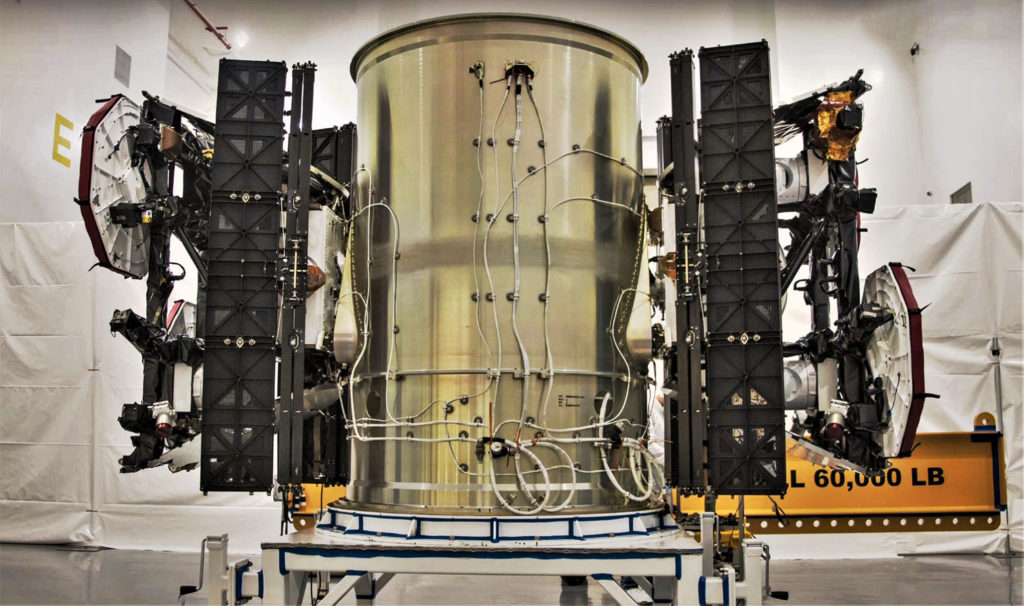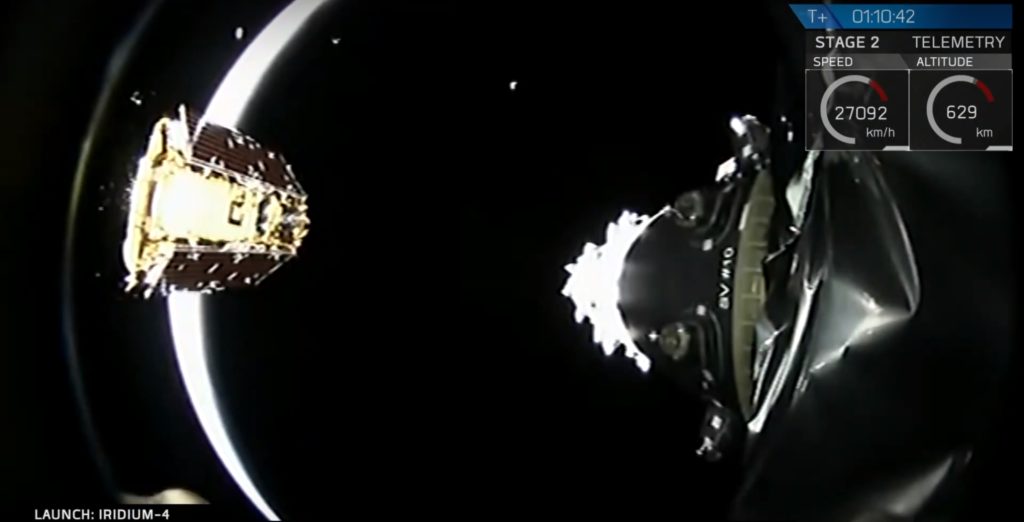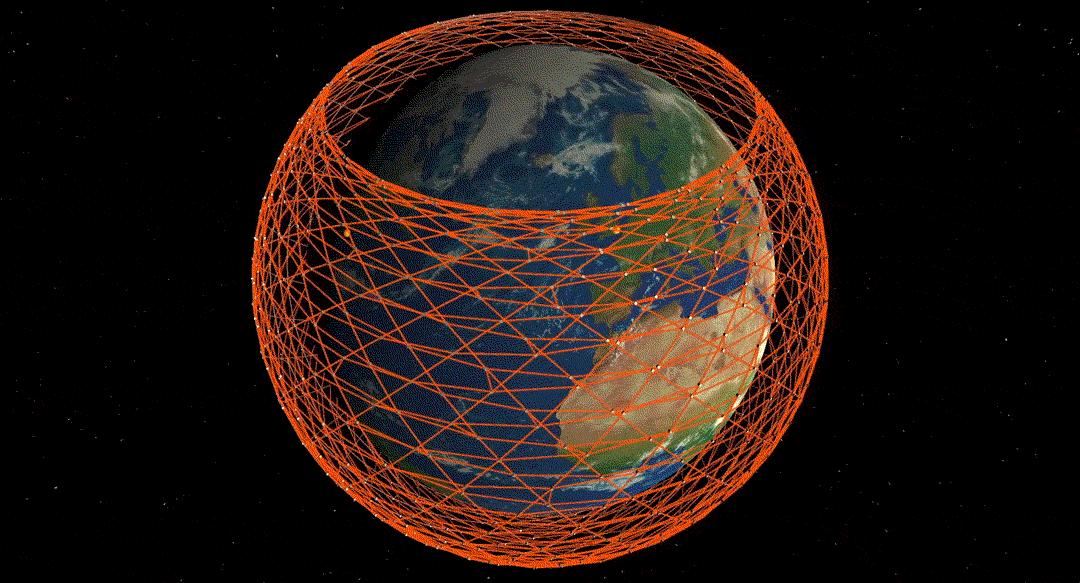
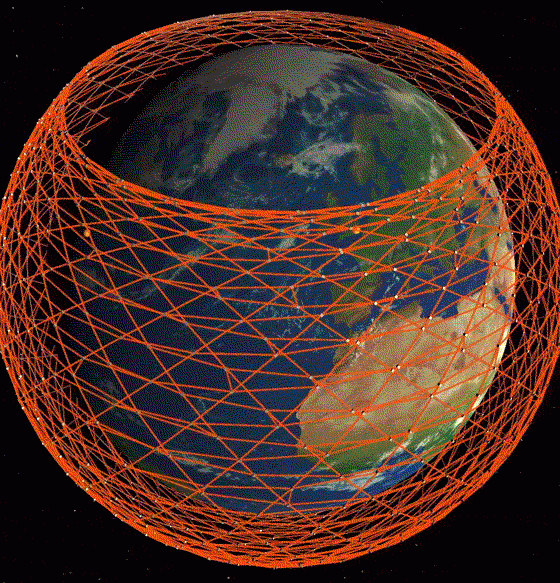
News
SpaceX’s Starlink internet constellation deemed ‘a license to print money’
According to a draft paper written by networking researcher and professor Mark Handley, SpaceX’s Starlink internet satellite constellation has the potential to significantly disrupt the global networking economy and infrastructure and do so with as little as a third of the initial proposal’s 4425 satellites in orbit.
A step or so further, Dr. Handley (according to a University College London colleague) suspects that a network like that proposed by SpaceX could rapidly become “a license to print money” thanks to the tangible benefits it would provide financial institutions and banks – as of today, shaving mere milliseconds off of communications latency can be a serious competitive advantage for traders.
The three LEO constellation planes (not including the seven thousand VLEO in the latest filing) pic.twitter.com/btX0pLQAzc
— Andrew Moore (@awm22) September 25, 2018
Asked to condense his argument into a few sentences, Dr. Handley’s colleague (Reddit /u/davoloid) described his excitement as such.
A Professor in Computer Science [Mark Handley] who specializes in how networks work has done a simulation of Starlink based on the available information. It will make long distance links very fast, as in, a short delay in sending a message, which we call latency. That’s very important to banks and similar companies, who always want to have the fastest information. They pay a lot of money to create networks, often private ones rather than through regular commercial providers. Even with the first phase of 1600 satellites, there will be big revenues for SpaceX.” – Reddit /u/davoloid, 11/2/18
- SpaceX’s first two Starlink prototype satellites are pictured here before their inaugural launch, showing off a thoroughly utilitarian bus and several advanced components. (SpaceX)
- A beautiful string of Iridium NEXT satellites deployed into the sunrise. (SpaceX)
Judging from the recent past of a practice known as High-Frequency Trading (HFT), where algorithms take over trading in financial markets and operate at speeds on the order of trades per millisecond, the highly volatile industry has already reached its conclusion. This is to say that HFT went from a wildly disruptive and lucrative technological advantage to a fundamental part of the world’s ever-changing financial infrastructure in just a few decades.
“The story about [HFT] is done. It’s a mature industry now, as much an embedded feature of our society as mutual funds or the income tax.” – Tim Worstall, 2017
“HFTs are still involved in the speed race and sometimes even race to pick off their market maker brethren. While it may be more expensive and more competitive today for HFT to pick off the slow traders, make no mistake, they have not gone away.” – Themis Trading, 2018
Much like electricity, the internet, and railroads went from kings of profit to marginal and tedious enterprises, it seems that HFT has gone from a nascent and fickle technology to a basic component of global infrastructure. As such, it is in no way, shape, or form “dead”. Just like step-change advancements in technology have forced service-based companies to upgrade or die, it seems that the availability of Starlink (or any comparable interconnected internet constellation) will create a massive imbalance between financial institutions that adopt early and those that do not or cannot.
If that ends up being the case, there will undoubtedly be an extraordinary surge in competitive financial infrastructure investment, with institutions desperately pursuing new ways to remain competitive (leveling the playing field vs. a shortcut to the front). Dr. Handley’s draft paper, accompanying video, and colleague’s clear excitement about the possibilities demonstrate (at least theoretically) that even just the first third (37%) of SpaceX’s preliminary 4425 satellite Starlink constellation would exhibit dramatic latency improvements between most conceivable access points.
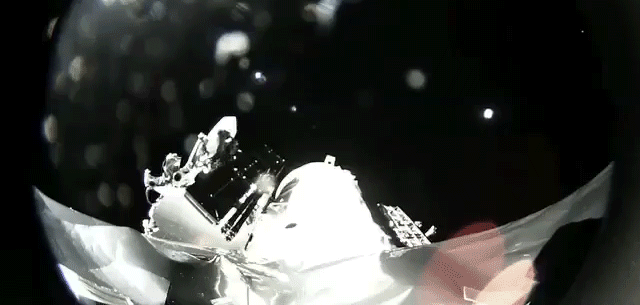
The first step’s first step
With all 4425 satellites in place, the benefits approach or even surpass theoretical best-case statistics for literal straight-line fiber optic cables. Of course, SpaceX’s true proposal includes yet another 7520 very low Earth orbit (VLEO) Starlink satellites (~350 km) that would more than double the bandwidth available while potentially cutting another huge chunk out of the already unsurpassable latency performance of LEO Starlink (~1100-1300 km).
Of course, a massive amount of work remains before SpaceX before any of the above futures can or are even technically able to come to fruition. Aside from regulatory difficulties and concerns about space debris from a potential ~12,000+ new satellites, SpaceX will have to go one or even two magnitudes beyond what the status quo of satellite manufacturing believes is achievable, mass producing and launching satellites in volumes that will dwarf anything undertaken in the history of spaceflight. Still, if anyone is going to accomplish such an extraordinary feat, one would be hard-pressed to find a better bet than SpaceX.
Watch an animation of Starlink created by Dr. Mark Handley here.
For prompt updates, on-the-ground perspectives, and unique glimpses of SpaceX’s rocket recovery fleet check out our brand new LaunchPad and LandingZone newsletters!

News
Tesla FSD fleet is nearing 7 billion total miles, including 2.5 billion city miles
As can be seen on Tesla’s official FSD webpage, vehicles equipped with the system have now navigated over 6.99 billion miles.

Tesla’s Full Self-Driving (Supervised) fleet is closing in on almost 7 billion total miles driven, as per data posted by the company on its official FSD webpage.
These figures hint at the massive scale of data fueling Tesla’s rapid FSD improvements, which have been quite notable as of late.
FSD mileage milestones
As can be seen on Tesla’s official FSD webpage, vehicles equipped with the system have now navigated over 6.99 billion miles. Tesla owner and avid FSD tester Whole Mars Catalog also shared a screenshot indicating that from the nearly 7 billion miles traveled by the FSD fleet, more than 2.5 billion miles were driven inside cities.
City miles are particularly valuable for complex urban scenarios like unprotected turns, pedestrian interactions, and traffic lights. This is also the difference-maker for FSD, as only complex solutions, such as Waymo’s self-driving taxis, operate similarly on inner-city streets. And even then, incidents such as the San Francisco blackouts have proven challenging for sensor-rich vehicles like Waymos.
Tesla’s data edge
Tesla has a number of advantages in the autonomous vehicle sector, one of which is the size of its fleet and the number of vehicles training FSD on real-world roads. Tesla’s nearly 7 billion FSD miles then allow the company to roll out updates that make its vehicles behave like they are being driven by experienced drivers, even if they are operating on their own.
So notable are Tesla’s improvements to FSD that NVIDIA Director of Robotics Jim Fan, after experiencing FSD v14, noted that the system is the first AI that passes what he described as a “Physical Turing Test.”
“Despite knowing exactly how robot learning works, I still find it magical watching the steering wheel turn by itself. First it feels surreal, next it becomes routine. Then, like the smartphone, taking it away actively hurts. This is how humanity gets rewired and glued to god-like technologies,” Fan wrote in a post on X.
News
Tesla starts showing how FSD will change lives in Europe
Local officials tested the system on narrow country roads and were impressed by FSD’s smooth, human-like driving, with some calling the service a game-changer for everyday life in areas that are far from urban centers.

Tesla has launched Europe’s first public shuttle service using Full Self-Driving (Supervised) in the rural Eifelkreis Bitburg-Prüm region of Germany, demonstrating how the technology can restore independence and mobility for people who struggle with limited transport options.
Local officials tested the system on narrow country roads and were impressed by FSD’s smooth, human-like driving, with some calling the service a game-changer for everyday life in areas that are far from urban centers.
Officials see real impact on rural residents
Arzfeld Mayor Johannes Kuhl and District Administrator Andreas Kruppert personally tested the Tesla shuttle service. This allowed them to see just how well FSD navigated winding lanes and rural roads confidently. Kruppert said, “Autonomous driving sounds like science fiction to many, but we simply see here that it works totally well in rural regions too.” Kuhl, for his part, also noted that FSD “feels like a very experienced driver.”
The pilot complements the area’s “Citizen Bus” program, which provides on-demand rides for elderly residents who can no longer drive themselves. Tesla Europe shared a video of a demonstration of the service, highlighting how FSD gives people their freedom back, even in places where public transport is not as prevalent.
What the Ministry for Economic Affairs and Transport says
Rhineland-Palatinate’s Minister Daniela Schmitt supported the project, praising the collaboration that made this “first of its kind in Europe” possible. As per the ministry, the rural rollout for the service shows FSD’s potential beyond major cities, and it delivers tangible benefits like grocery runs, doctor visits, and social connections for isolated residents.
“Reliable and flexible mobility is especially vital in rural areas. With the launch of a shuttle service using self-driving vehicles (FSD supervised) by Tesla in the Eifelkreis Bitburg-Prüm, an innovative pilot project is now getting underway that complements local community bus services. It is the first project of its kind in Europe.
“The result is a real gain for rural mobility: greater accessibility, more flexibility and tangible benefits for everyday life. A strong signal for innovation, cooperation and future-oriented mobility beyond urban centers,” the ministry wrote in a LinkedIn post.
News
Tesla China quietly posts Robotaxi-related job listing
Tesla China is currently seeking a Low Voltage Electrical Engineer to work on circuit board design for the company’s autonomous vehicles.

Tesla has posted a new job listing in Shanghai explicitly tied to its Robotaxi program, fueling speculation that the company is preparing to launch its dedicated autonomous ride-hailing service in China.
As noted in the listing, Tesla China is currently seeking a Low Voltage Electrical Engineer to work on circuit board design for the company’s autonomous vehicles.
Robotaxi-specific role
The listing, which was shared on social media platform X by industry watcher @tslaming, suggested that Tesla China is looking to fill the role urgently. The job listing itself specifically mentions that the person hired for the role will be working on the Low Voltage Hardware team, which would design the circuit boards that would serve as the nervous system of the Robotaxi.
Key tasks for the role, as indicated in the job listing, include collaboration with PCB layout, firmware, mechanical, program management, and validation teams, among other responsibilities. The role is based in Shanghai.
China Robotaxi launch
China represents a massive potential market for robotaxis, with its dense urban centers and supportive policies in select cities. Tesla has limited permission to roll out FSD in the country, though despite this, its vehicles have been hailed as among the best in the market when it comes to autonomous features. So far, at least, it appears that China supports Tesla’s FSD and Robotaxi rollout.
This was hinted at in November, when Tesla brought the Cybercab to the 8th China International Import Expo (CIIE) in Shanghai, marking the first time that the autonomous two-seater was brought to the Asia-Pacific region. The vehicle, despite not having a release date in China, received a significant amount of interest among the event’s attendees.
